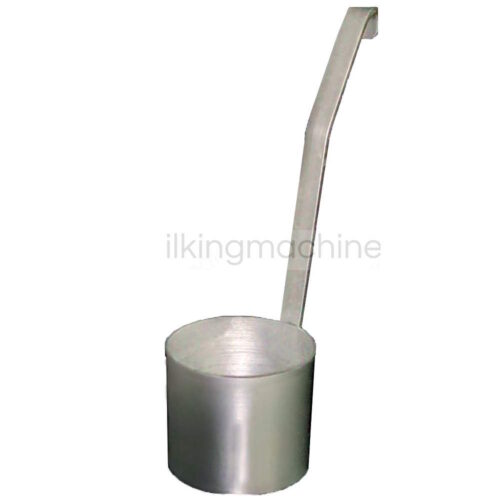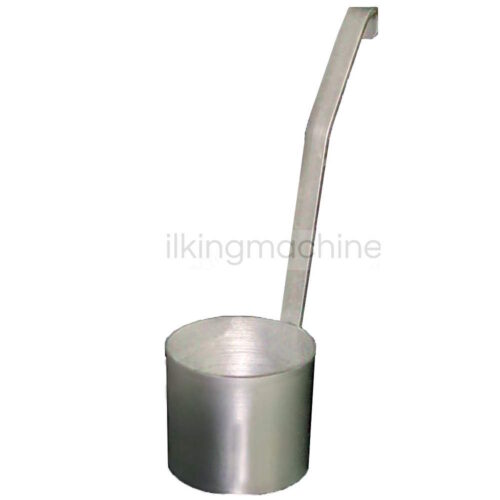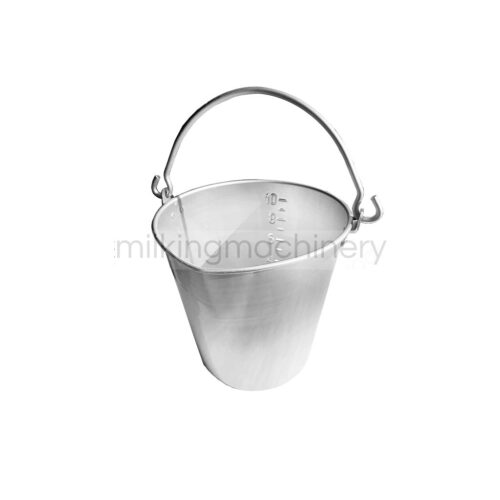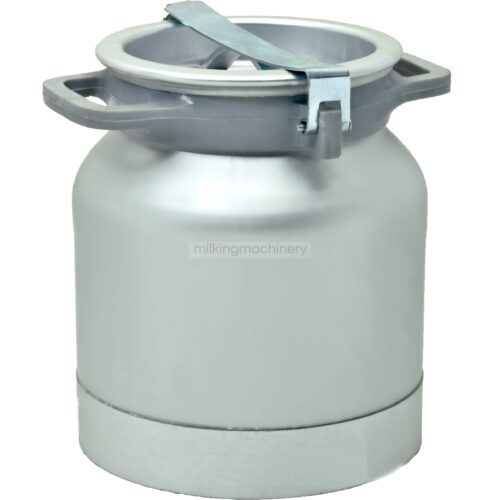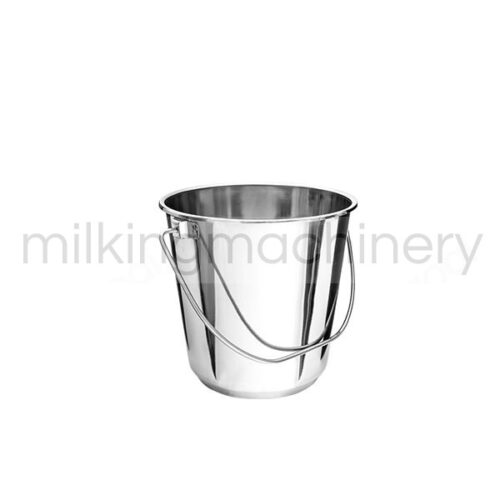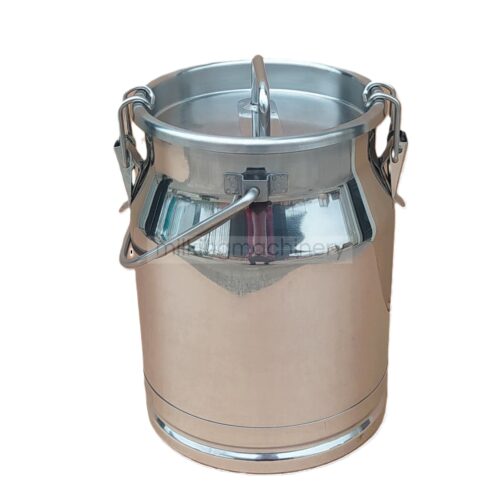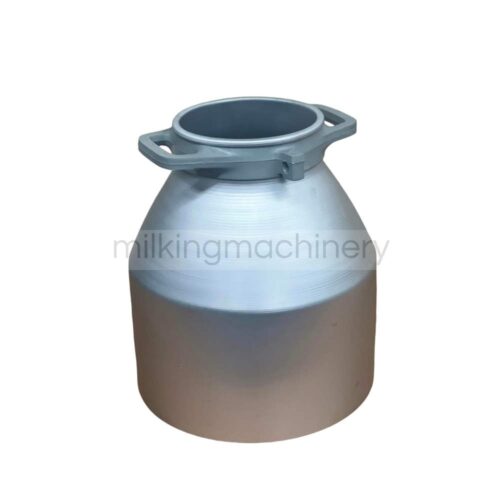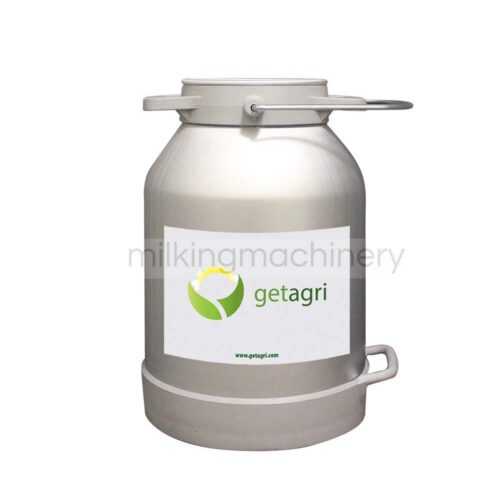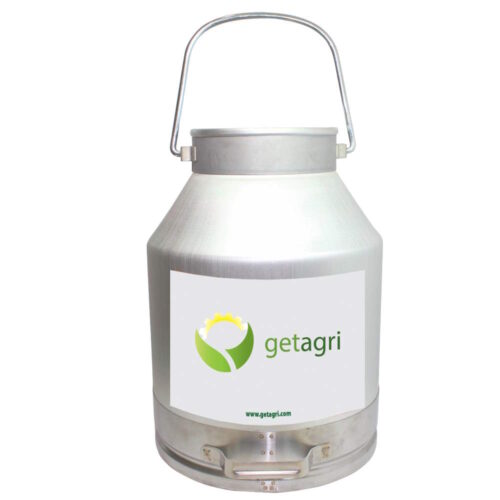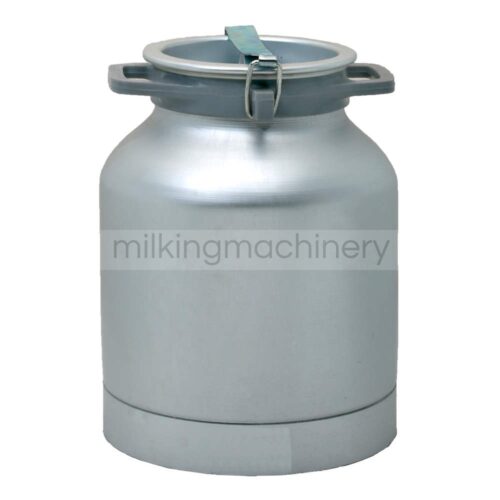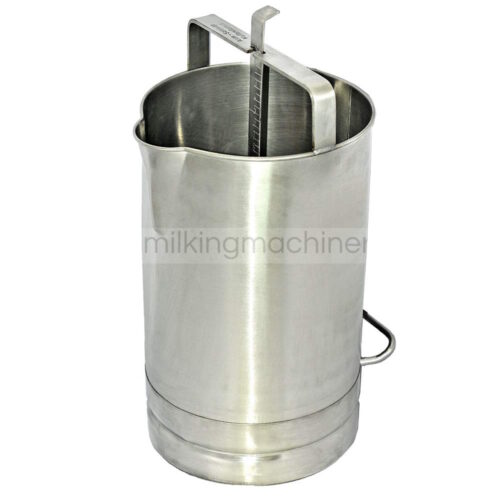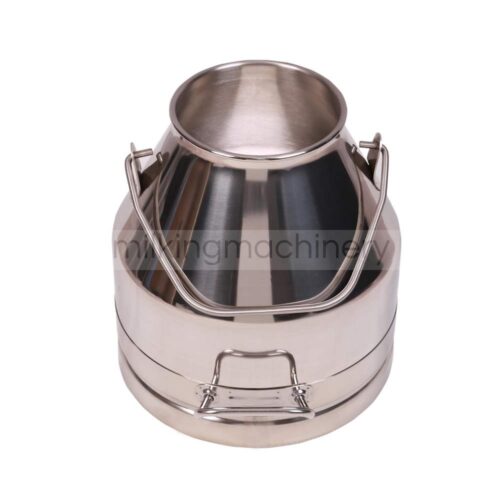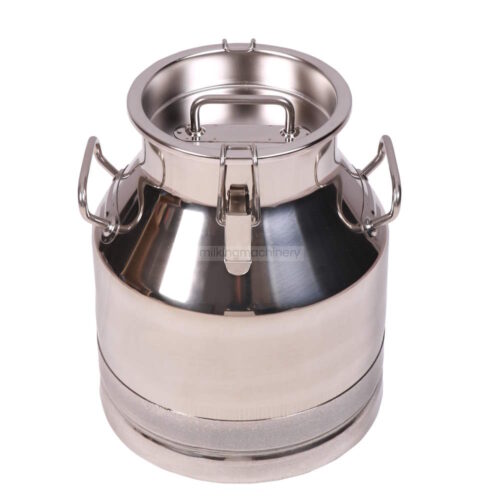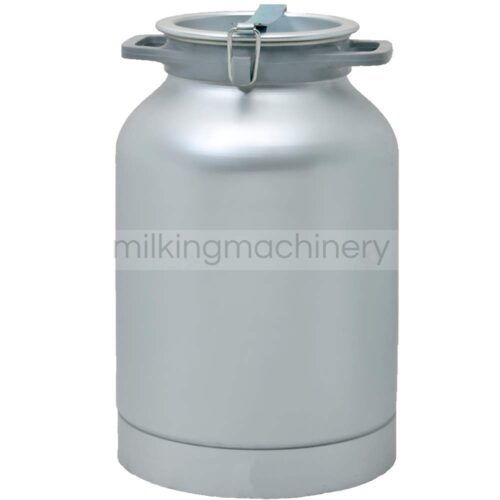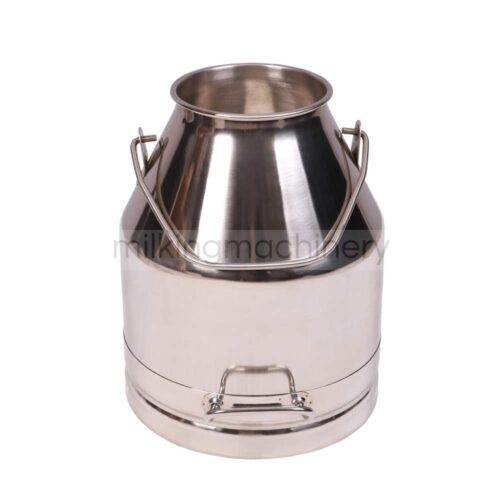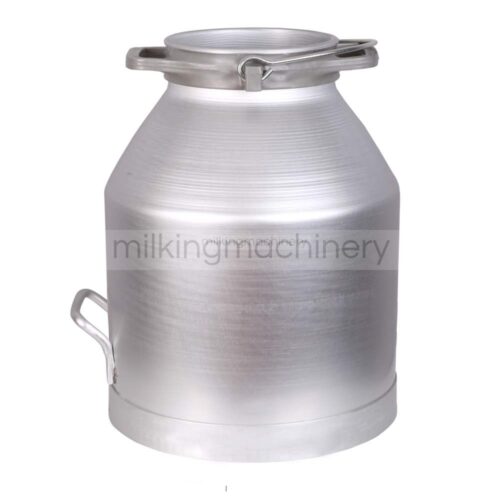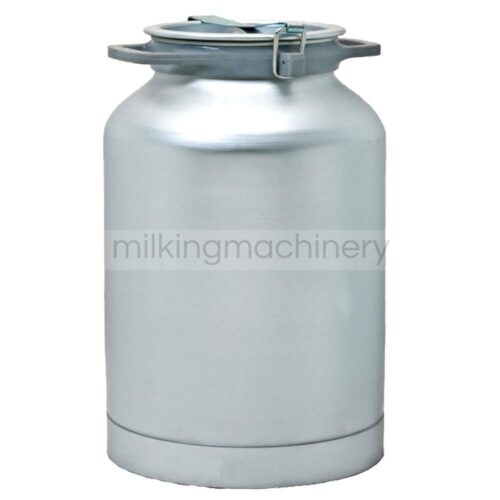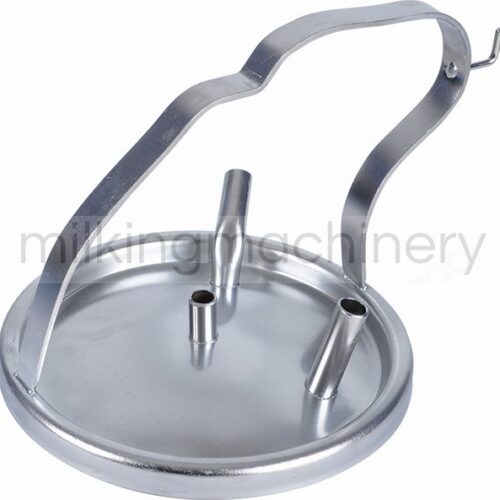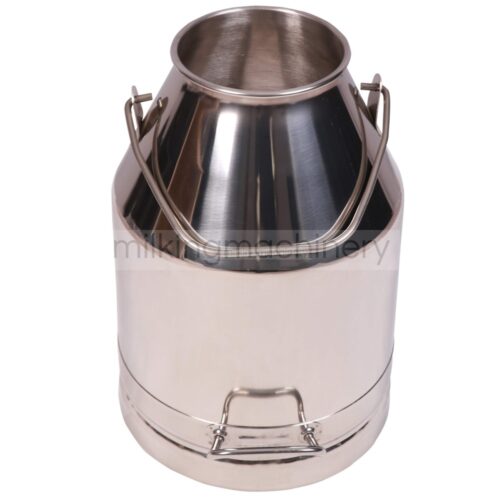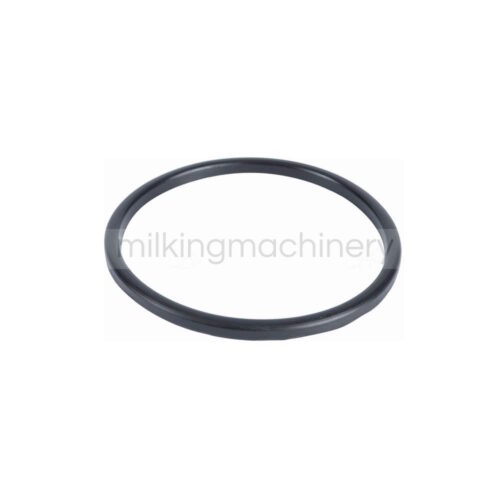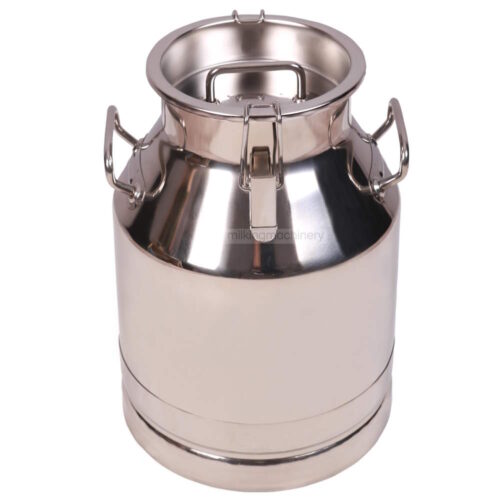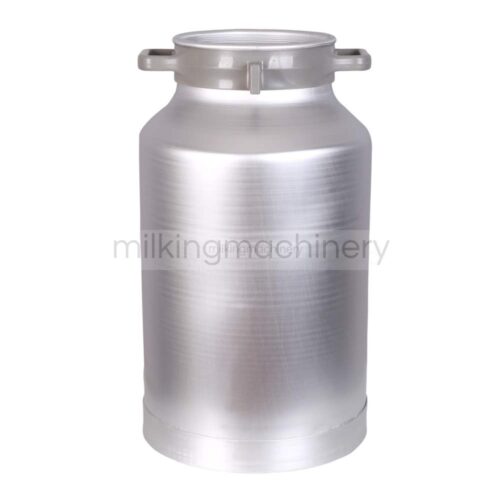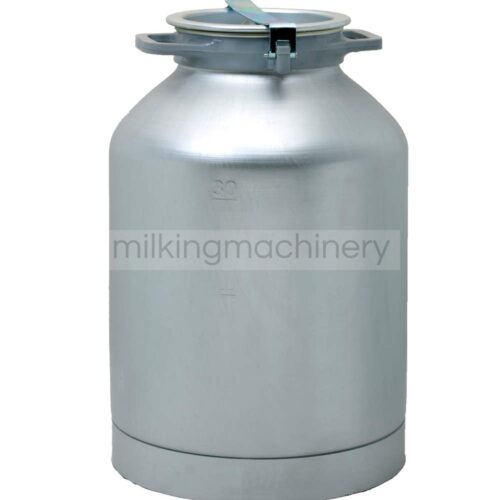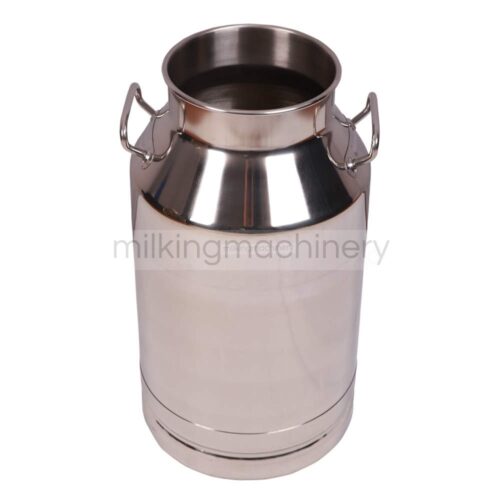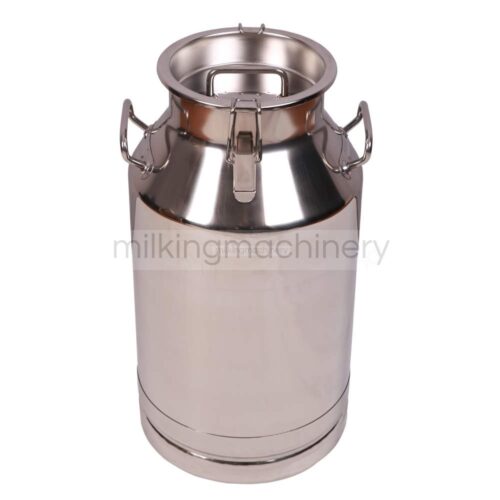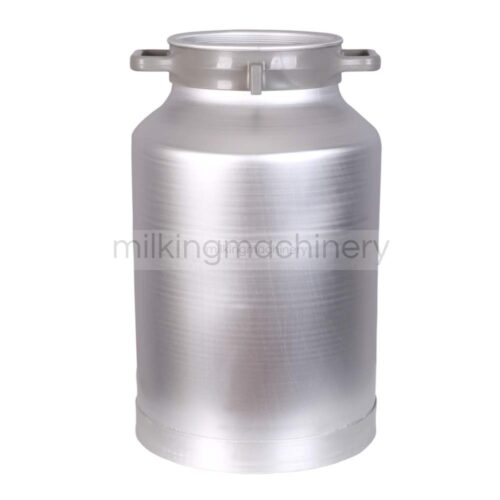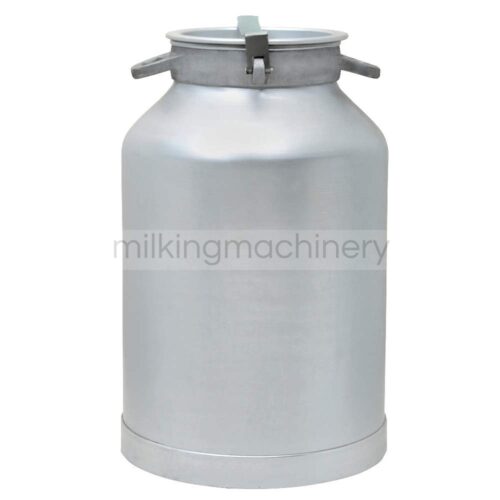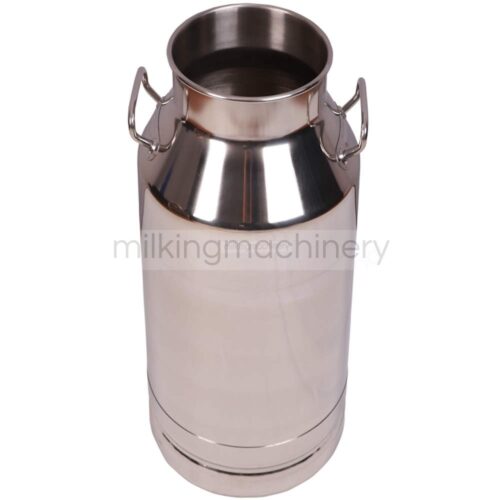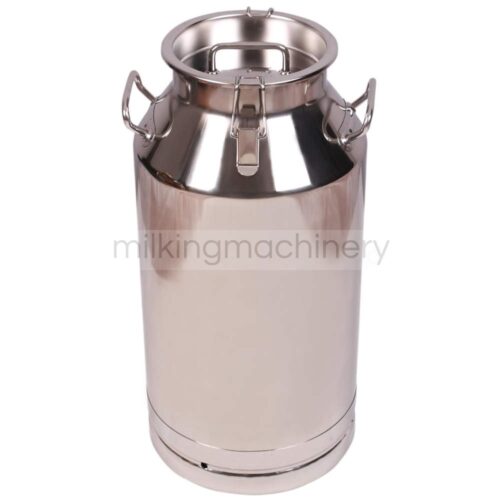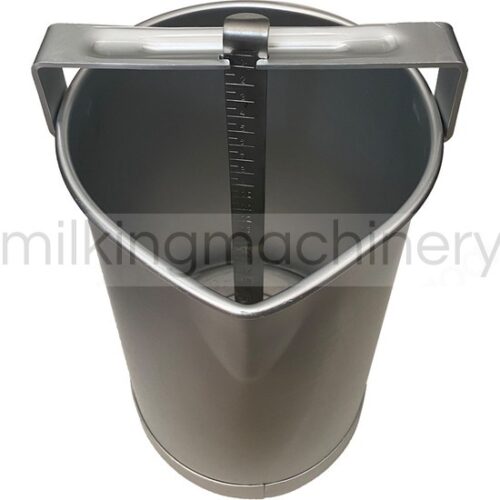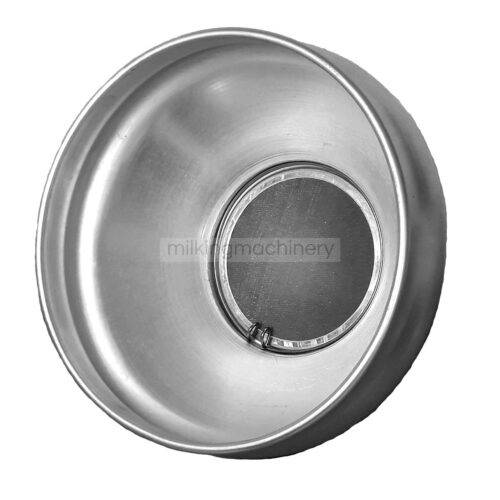Milk buckets are containers used primarily in dairy farming for collecting and storing milk from cows, goats, or other milk-producing animals. They come in various sizes and materials, including stainless steel, plastic, and aluminum. Here are some key points about milk buckets:
1. *Materials*:
– *Stainless Steel*: Durable, easy to clean, and resistant to corrosion. Ideal for maintaining milk hygiene.
– *Plastic*: Lightweight and often less expensive but may not be as durable as metal.
– *Aluminum*: Lightweight and durable but can react with certain substances and may be prone to denting.
2. *Design Features*:
– *Handles*: Most milk buckets have sturdy handles for easy carrying.
– *Lids*: Some come with lids to prevent contamination and spillage.
– *Measurements*: Some buckets have volume markings for accurate measurement.
3. *Usage*:
– Used during the milking process to collect milk directly from the animal.
– Can also be used to transport milk to storage tanks or processing areas.
4. *Cleaning and Maintenance*:
– Must be thoroughly cleaned and sanitized after each use to prevent bacterial growth and contamination.
– Stainless steel buckets are often preferred for their ease of cleaning and resistance to odors and stains.
When selecting a milk bucket, consider factors like the volume of milk produced, ease of handling, and the bucket’s durability and ease of cleaning.
- Milk buckets are typically made of high-quality stainless steel, which is durable, easy to clean, and food-grade safe.
- They come in various sizes, ranging from small 5 liters buckets to larger 20 liters and even 50 liters buckets, allowing farmers to choose the appropriate size for their needs.
- Many milk buckets feature a lid to keep the milk clean and prevent contamination
. Some also have a handle for easy carrying.
The primary material used to make milk buckets is stainless steel, known for its durability, ease of cleaning, and food-grade safety standards. Stainless steel milk buckets are commonly used in dairy farming for collecting and storing milk hygienically.
The advantages of using stainless steel milk buckets over other materials include:
- Hygiene: Stainless steel is non-porous and easy to clean, making it resistant to bacteria growth and ensuring proper hygiene for milk storage
- Durability: Stainless steel is a robust material that is resistant to corrosion, rust, and damage, providing longevity and reliability for milk storage equipment
- Food-Grade Safety: Stainless steel is a food-grade material, ensuring that it does not react with milk or contaminate it, maintaining the quality and purity of the milk
- Easy Maintenance: Stainless steel milk buckets are low maintenance, requiring simple cleaning and upkeep to keep them in good condition, reducing operational hassles
- Versatility: Stainless steel milk buckets are versatile and suitable for a wide range of dairy farming applications, offering flexibility and convenience in milk handling
Overall, stainless steel milk buckets are favored in dairy farming for their superior hygiene, durability, safety, ease of maintenance, and versatility compared to other materials.

